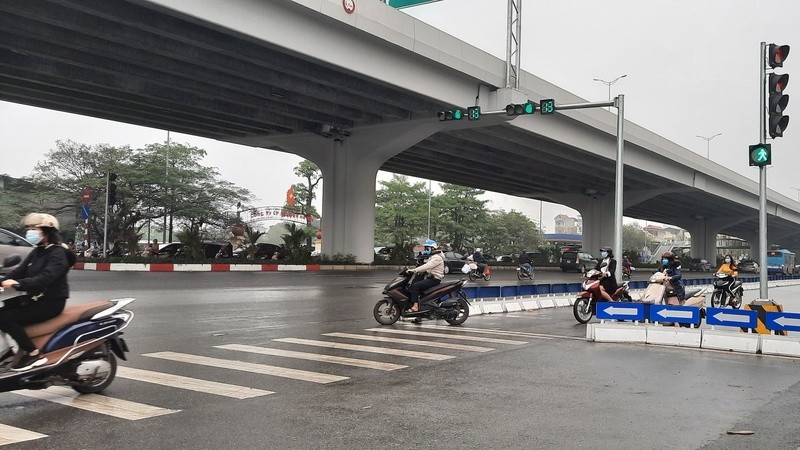The Ministry of Finance (MoF) reported that in the first three months of this year, the total disbursement of public investment in Vietnam was low, VND60.75 trillion (US$2.64 billion), hitting 11.95% of the initial plan and 13.17% of the plan assigned by the prime minister. In which, foreign-funded capital disbursement sat at merely 0.66%.
Many ministries and localities achieved high disbursement rates, including Thai Binh (43.24%), Bac Ninh (30.2%), Hung Yen (28.67%), Thanh Hoa (27.79%), and Ha Nam (27.63%), and the Ministry of Public Security (31.62%). Up to 31 ministries, central agencies, and localities have yet to boost disbursement of this type of capital.
The main causes behind this grey situation is that, according to the MoF, in the first quarter, ministries, central agencies, and localities were focusing on disbursing capital of 2020 which has been transferred to 2021. Thus the disbursement rate of capital in 2021 has been generally low. In addition, a number of big projects have been seeing their investment procedures adjusted, and investors have also been making preparations in bidding and constructions, which would need much time for the official construction of projects and for money to be disbursed.
Another cause also comes from snail-paced site clearance which has negatively impacted on the speed of disbursement in the first months of the year.
Imperative order
The Ministry of Planning and Investment (MPI), which is in charge of conducting state management over Vietnam’s public investment plans, has sent a document to ministries, central agencies, and localities nationwide asking them to report difficulties and obstructions in their disbursement of state budget capital which has already been allocated to them for 2021.
They are also requested to report to the MPI the results of public investment disbursement, including the sum which has been disbursed and the sum which have failed to be realised. They are also asked to propose solutions for speeding up the disbursement.
“The solutions include two groups, with the first on policies about investment procedures and plan, site clearance, and construction, and the second on implementation,” said the MPI document.
The MPI will collect all proposals and measures and then make official proposals to the government in public investment disbursement for this year and beyond, which must ensure goals, high quality, and effectiveness in the use of this type of capital.
Earlier Prime Minister Pham Minh Chinh asked ministries, central agencies, and localities to speed up public investment disbursement as one of the key solutions to fuel economic growth, which is expected to be about 6.5% this year.
He required ministries and sectors, especially heads of ministries and sectors, to be fully responsible for public investment disbursement. The MPI has to review the disbursement and advance solutions to disburse investment at a high rate and in an effective manner.
One year ago, the government released Resolution No.30/NQ-CP on launching the government’s action programme on implementing the Politburo’s Resolution No.39-NQ/TW dated January 15, 2019 on increasing the effectiveness in managing, exploiting, using, and promoting resources of the economy.
The programme came amid the economy facing huge difficulties caused by COVID-19 which has been heavily sabotaging enterprises’ performance.
One of the biggest highlights in the programme is that the government has ordered ministries and localities to quickly review all state-funded projects so that they can be both constructed and put into operation soon, in service of socio-economic development and attracting more private investment.
“It is necessary to review the implementation speed of projects. Investment in all ineffective projects must be stopped, and resources must be prioritised into key projects and infrastructure works,” read Resolution 30. “Inspection and supervision over projects must be intensified.”
Improving disbursement
The National Assembly in last November passed a plan for boosting public investment for 2021 Accordingly, total investment capital from the state coffers for next year will be VND477.3 trillion (US$20.75 billion), up 1.4% against the similar plan for last year. In which, money from the central budget will increase 0.9% on-year, and money from the local coffers will expand 1.9% year-on-year.
The VND477.3 trillion public investment capital will be used for many projects. For example, VND16 trillion (US$695.65 million) will be used for national target programmes, VND15.038 trillion (US$653.82 million) for the project on constructing the North-South Expressway; VND4.66 trillion (US$202.6 million) for the project on land compensation and resettlement for the Long Thanh International Airport; VND2.8 trillion (US$121.74 million) for developing coastal roads; and VND4.7 trillion (US$204.34 million) for supporting localities in implementing some key new infrastructure projects.
According to the MPI, in 2021, these new investment capital sums, in addition to capital attracted from private investors including foreign ones, will help to complete the construction of the Eastern Cluster of the North-South Expressway project, the national coastal road line, connection road lines, airports, and seaports.
One of the main drivers behind Vietnam’s growth rate of 2.91% in 2020 is public investment, with a range of public-funded infrastructure projects playing a major role in boosting demand, supporting enterprise development, and creating jobs.
After a conference on public investment in July 2020, the government dispatched seven delegations to ministries and provincial authorities to learn about the situation and seek solutions to remove obstacles in disbursement. As a result, the rate of public investment disbursement accelerated in the second half of 2020 to reach 91.1% of the full-year target, with the total figure at VND466.6 trillion (US$20.2 billion), up by 34.5% from 2019.
Public investment is mainly concentrated on key socio-economic infrastructure projects, especially in transport, water resources, education, healthcare and agriculture. Thus, it will act as the lure to attract private and foreign investment, helping to increase total social investment to 33-34%, which is a highly important factor in reviving and maintaining economic growth in 2021.
















